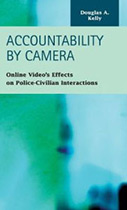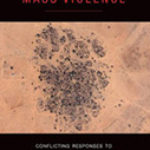Accountability by Camera: Online Video’s Effects on Police-Civilian Interactions

Author: Douglas A. Kelly
Publisher: El Paso, TX: LFB Scholarly Publishing LLC, 2014. 300p.
Reviewer: Mike Miller | July 2015
I found Accountability by Camera: Online Video’s Effects on Police-Civilian Interactions to be a sound piece of academic research and very informative reading. This work will appeal to a broad audience from academics to law enforcement practitioners. It should be required reading for any current or aspiring police administrator or public sector leader. The choice of topic was both timely and important, given public reaction and media scrutiny of recent events involving the actions of police. This climate, coupled with the emerging technologies which allow for spontaneous video recording of police-citizen interactions makes this work so essential and relevant. The author introduces the topic effectively by first explaining the rationale for selection. He then goes on to educate the reader on the constitutional laws and protections which regulate photography in public and the limits on police authority during public interactions. A short history of photography and the state of current digital imaging technologies is also presented. The topic selection and research design is especially well-timed given that the primary mechanism for the uploading of videos used in the case studies was YouTube, which only came into existence in 2005.
The research methodology, while somewhat complex on first reading, was adequately explained and augmented with supporting methodological detail and literature review. The use of case studies in this type of study is interesting, but required a thorough identification and explanation of variables that would ultimately inform research questions. For this design the author identified 38 variables for analysis. The rationale and appropriateness of each of these variables is thoroughly explained and supported in the research plan and process section. Fourteen cases studies were detailed in the study. These cases were selected from user uploaded videos which were posted on YouTube between 2005 and 2010. Each case involved a police- citizen interaction where police misconduct was alleged, and that was recorded by a non-professional photographer. The cases were selected after a review of uploaded content to YouTube between 2008 and 2011. Ten primary cases were chosen that met the study’s criteria. Four additional cases were selected to provide investigative contrast. This use of contrasting cases to establish predictability is properly explained and supported by the academic literature.
The level of detail in researching each case study is commendable and adds considerable context to the emergent patterns section. The author exhaustively searched public records, internet sources and media reports to create the variables used to analyze each case. The book concludes with a summary of the findings and discussion of the study’s limitations. The author explains that given the limited number of studies used, and the fact that they are essentially fourteen separate qualitative studies, there was no way to generalize the findings. The author provides an enlightening discussion of how these findings could be used to support the three theories presented; findings that could help to explain the complex issues related to police –public interactions that have recently become the focus of public ire and media scrutiny.
Dr. Mike Miller, Associate Professor of Criminal Justice, South College


